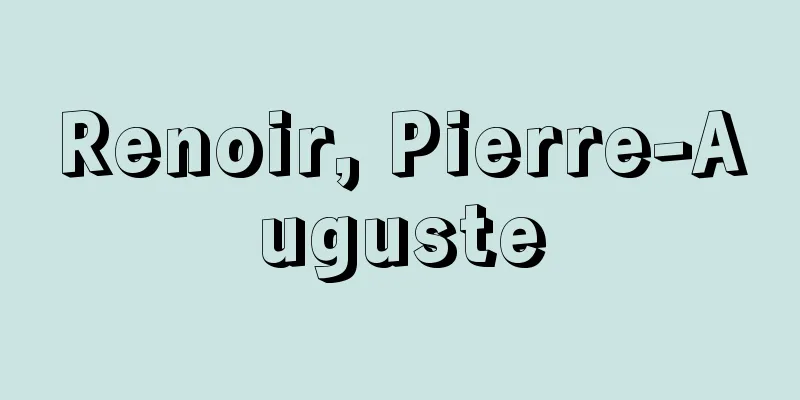dies solis (English spelling) diessolis

|
...In particular, Mithraism was a strong enemy of Christianity. Constantine I had considered assimilating Mithraism, which had many similarities with Christianity, and in 321 decided to call the weekly holiday "dies solis (sun day)." The same church policy can be seen with regard to Christmas. *Some of the terminology explanations that mention "dies solis" are listed below. Source | Heibonsha World Encyclopedia 2nd Edition | Information |
|
…とくに,ミトラス教はキリスト教の強敵であった。コンスタンティヌス1世はこれよりさき,類似点の多いミトラス教との習合を考え,321年には毎週の休日を〈太陽の日dies solis=sun day〉と呼ぶことに決めた。クリスマスについても教会の同一の方針をみることができる。… ※「dies solis」について言及している用語解説の一部を掲載しています。 出典|株式会社平凡社世界大百科事典 第2版について | 情報 |
<<: Diestrammena japonica (English spelling) Diestrammena japonica
>>: dies Mercurii (English spelling) diesMercurii
Recommend
Ornithine Cycle
This is a reaction pathway that produces urea in ...
Dye for anodizing - alumite dye
… Mordant dyes are dyes that do not have a direct...
Consonant - Shiin
One of the two major classifications of single so...
Werkraum
After the Second World War, small theaters with s...
movie palace
...In the 1910s, feature-length films became comm...
Ivo Andrić
Serbian author. Born into a family of small-time ...
The Encyclopedia of Male Homosexuality - Nanshoku Ookagami
Ihara Saikaku's Ukiyo-zoshi. Published in Jan...
Sesshu
A Zen monk and painter-monk from the Muromachi pe...
Strait of Juan de Fuca
A strait between the Olympic Peninsula in northwes...
Kanto
[1] (meaning east of the checkpoint) [1] Since the...
Pure and impure
〘Noun〙① Pure and impure. Clear and impure. ※Sankyo...
Southern Rhodesia
…Official name: Republic of ZimbabweArea: 390,757...
Zulu - Zulu
It is a Bantu language spoken from South Africa to...
murr
…It is an aromatic gum resin of the Boswellia gen...
Khafra
...For this reason, the Old Kingdom is also calle...









